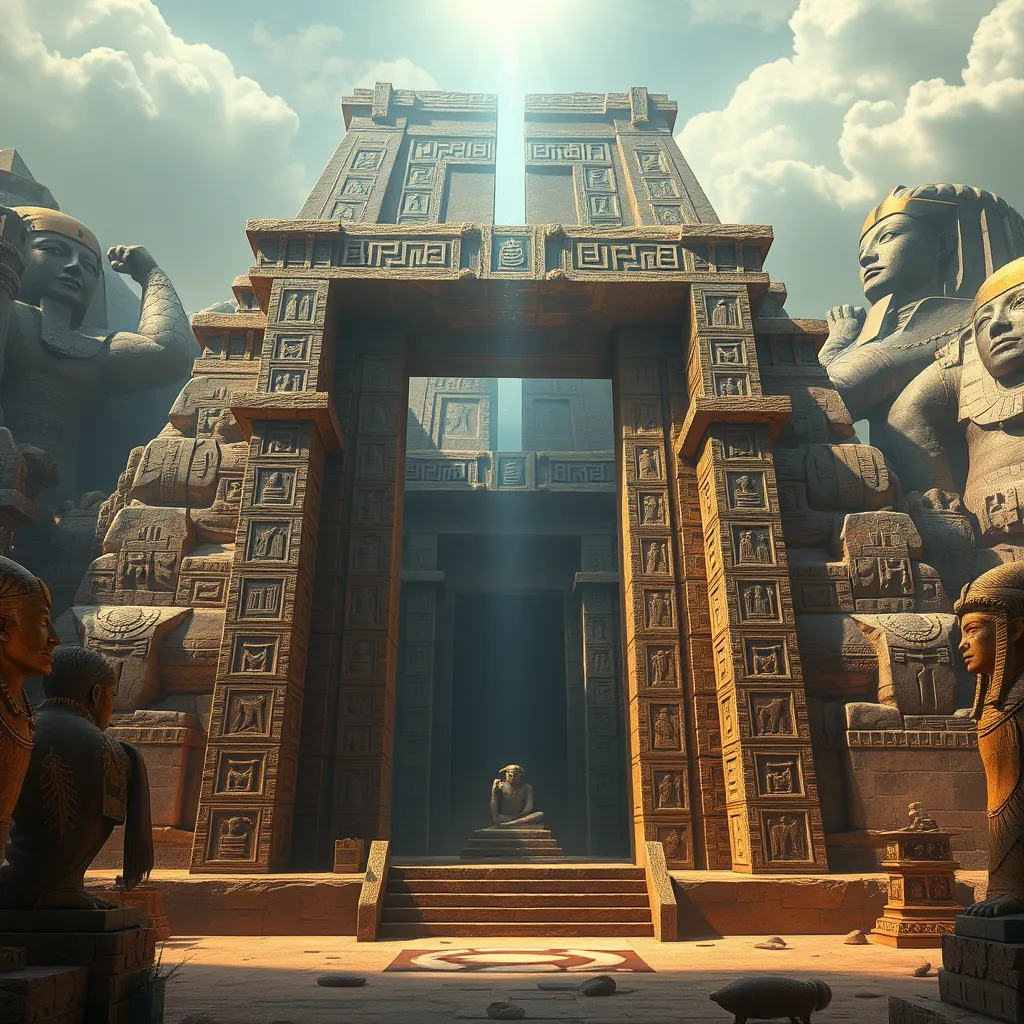The Duat: Unveiling the Secrets of the Afterlife
I. Introduction to the Duat
The Duat, a term derived from ancient Egyptian language, refers to the realm of the dead and is a central concept in ancient Egyptian beliefs regarding the afterlife. It is viewed not merely as a destination but as a complex landscape where souls undergo transformation and judgment after death.
In Egyptian mythology, the afterlife is a continuation of life on Earth, where the deceased engage in various activities and face trials. The Duat serves as both a passage and a final resting place, embodying the Egyptians’ profound beliefs about immortality and the cyclical nature of existence.
II. Historical Context of the Duat
The beliefs surrounding the Duat evolved significantly throughout ancient Egyptian history. Initially, the afterlife was a simple realm for the dead, but over time, it became more intricate, reflecting the changing values and beliefs of Egyptian society.
Key texts and inscriptions, such as the Pyramid Texts and the Book of the Dead, play a crucial role in our understanding of the Duat. These texts provide insights into the rituals, deities, and the journey of the soul through the afterlife.
III. The Geography of the Duat
The Duat is often depicted as a vast, multi-layered world filled with various realms and landscapes. Each region represents different aspects of the afterlife, including challenges, rewards, and punishments. Some notable features include:
- The Field of Reeds: A paradise where the righteous enjoy eternal peace.
- Lake of Fire: A place of punishment for the wicked.
- Darkness and Chaos: Regions representing uncertainty and danger.
Symbolic representations of these areas often appear in tomb paintings and inscriptions, illustrating the Egyptians’ beliefs about the journey after death and the importance of navigating these landscapes successfully.
IV. Deities and Entities of the Duat
The Duat is populated by numerous deities and entities that play vital roles in the afterlife journey. Major gods associated with this realm include:
- Osiris: The god of the afterlife, resurrection, and fertility, who rules over the Duat.
- Anubis: The jackal-headed god who oversees mummification and the protection of graves.
In addition to these prominent figures, lesser-known spirits and entities inhabit the Duat, each contributing to the overall functioning of the afterlife. These include guardians, judges, and various other spirits who assist or challenge the deceased on their journey.
V. The Journey Through the Duat
The journey through the Duat is a critical aspect of Egyptian afterlife beliefs. Upon death, the soul embarks on a perilous journey, facing various challenges and trials that test its worthiness. This journey includes:
- Crossing the Waters: The soul must navigate a treacherous river, symbolizing the transition between life and death.
- Encounters with Serpent Deities: The deceased must confront and overcome serpent deities that guard the paths.
- Facing Judgment: Ultimately, the soul reaches the Hall of Judgment, where it must present itself for evaluation.
Successful navigation through the Duat leads to a favorable judgment and entry into the afterlife’s paradise, while failure results in dire consequences.
VI. The Weighing of the Heart Ceremony
One of the most significant events in the Duat is the Weighing of the Heart ceremony. During this ritual, the heart of the deceased is weighed against the feather of Ma’at, the goddess of truth and justice.
The ceremony holds profound significance, as it determines the soul’s fate in the afterlife. If the heart is lighter than the feather, the individual is deemed worthy and can enter the Field of Reeds. Conversely, if the heart is heavier, it signifies a life of wrongdoing, leading to the soul’s destruction by the monster Ammit.
VII. Art and Literature Depicting the Duat
Art and literature from ancient Egypt offer remarkable insights into the Duat and its significance. Tomb paintings often depict scenes of the deceased’s journey through the Duat, showcasing the various trials and the presence of deities.
Key literary works, such as the Book of the Dead, provide detailed accounts of the rituals and beliefs associated with the afterlife, including spells intended to assist the deceased in navigating the Duat. These artifacts and texts not only serve religious purposes but also reflect the cultural values and social structures of ancient Egypt.
VIII. The Legacy of the Duat in Modern Culture
The concepts of the Duat have left an indelible mark on modern culture, influencing contemporary literature, film, and spiritual beliefs. Numerous works of fiction draw on themes of the afterlife, resurrection, and judgment, echoing the rich tapestry of Egyptian mythology.
Moreover, there is a renewed interest in ancient Egyptian afterlife beliefs within modern spirituality. Many people seek to understand and integrate these ancient concepts into their own beliefs about life, death, and the possibility of an afterlife.
In conclusion, the Duat remains a fascinating subject of study, revealing the complexities of ancient Egyptian beliefs about life after death. Its rich symbolism, intricate deities, and profound cultural significance continue to captivate scholars and enthusiasts alike, ensuring that the secrets of the Duat are never forgotten.




